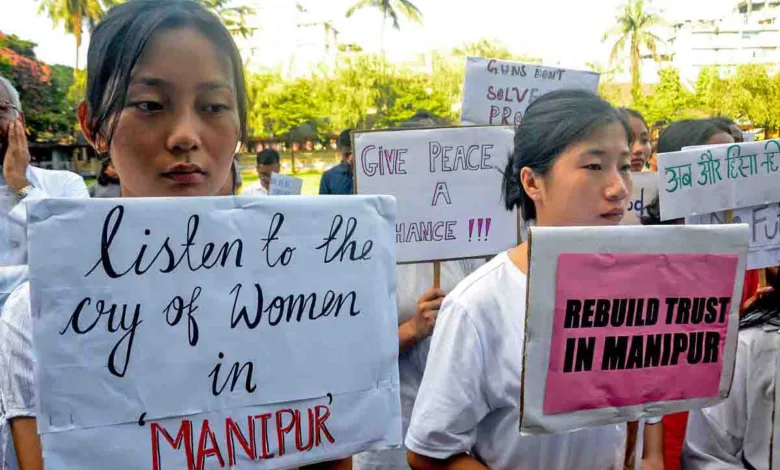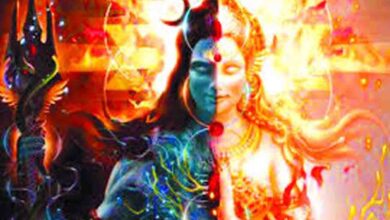‘Demonised’ Meitei Community of Manipur: Recollection and Reflection

VIEWPOINT
 Romit Bagchi
Romit Bagchi
My journalistic assignment over, as was my wont, when I was strolling around the sprawling North Bengal University campus in Siliguri I saw four youngsters talking among themselves in hushed, cultured tones. It was clear from their physical features that they were from a part of the northeast. I was suddenly gripped by an impulse to talk to them. I was then writing my maiden book on the Gorkhaland unrest in the Darjeeling hills of West Bengal. Also, I was interested in the tangled history of the northeastern region known for its confounding linguistic and ethno-cultural diversity and perpetual unrest. I walked across towards them and introduced myself as a journalist working for a national English daily. They smiled at me and said they were from Manipur. That deepened my interest in them. Rabindranath Tagore’s dance drama Chritangada was based on the mythological princess of the kingdom of Manipur who was one of the wives of Mahabharata’s Arjuna. I mentioned this to them and they nodded with appreciative smile. They were aware of it. They were Meitei youths.
They told me conversationally that after India’s independence and the princely state’s merger in India in 1949, new avenues of modern education opened in both the plains mainly inhabited by the non-tribal Meitei community and the hills where the tribal Kuki-Zomi people reside. As a result, a middle class emerged in both the plains and the hills of Manipur. However, the newly awakened Meitei middle class left its deep, creative imprint in the realms of literature, art and music.
Yet, the Meitei people were a disgruntled lot and a large section of the community resented the princely state’s merger with India, leading to insurgency that swept across the plains, wave upon wave. This stemmed from their feeling unfairly disadvantaged as compared to the tribal middle classes not just in Manipur hills but in other states like Nagaland, Mizoram and Meghalaya. While the tribal middle classes-entirely Christians- were enjoying the affirmative action benefits under the Scheduled Tribes grouping with greater access to education, jobs and land rights, the Meitei community, clinging to Hinduism for centuries, remained mired in stifling stagnancy with their creative passion thwarted. They were thus losing out in the competition for jobs to the convent-educated tribal middle classes who were zealously using the benefits of reservation for their professional enhancement.
The Meitei youngsters said emotionally that though their community had been included as a tribal community alongside the Nagas and the Kukis by the British government the scenario suddenly changed for them after independence as they were kept out of the Scheduled Tribes grouping as per the Constitution (Scheduled Tribes) Order passed in 1950. They ascribed this selective discrimination to the fact that the majority of them had been practising Vaishnavism, a prominent sect of Hinduism. Although they were given the OBC status under the Mandal Commission recommendations the Scheduled Tribe status had been eluding them. They wondered how long they, the original inhabitants of Manipur, would be at the receiving end of discrimination and bias as compared to the Christian hill tribes.
Many years have passed since the time I talked to these Meitei youngsters. Now, Manipur, up in flames again, continues to convulse with horrid violence, bringing the nation’s worried attention back to the northeastern region which a scholar described as India’s troubled periphery. The frenzied mob violence that has transformed a large swathe of Manipur into killing fields made me study the post-independence history of the Meitei community. I learnt a lot of new things about them.
Their growing grievances against the Indian State spawned a strong separatist tendency among them. Demonstrating their hostility and articulating pent-up frustration, the separatist groups within the community abandoned their Hindu identity and promoted their pre-Hindu faith Sanamahi. The researcher and scholar on the northeast region, Subir Bhaumik writes in his book ‘Troubled Periphery: Crisis of India’s North East’: “As political separatism gained momentum in the Imphal Valley, the rebel groups demonstratively abandoned their Hindu identity in a hostile gesture towards the Indian state. Some of them promoted the Sanamahi cult to emphasise the distinct history and the identity of the Meiteis.”
In continuation of this separatist/revivalist trend among the Meitei community, the oragnisations which were advocating the community’s separation from the national cultural mainstream also insisted on abolition of the Bengali script that was being used for the Meitei language since the 18th century. They argued that the kings of the erstwhile Manipur princely state had surrendered the distinct Meitei identity through adoption of Bengal’s Vaishnavitefaith and the Bengali script for Meitei language. But according to Subir Bhaumik, it was not possible mainly because of two facts- the original Meitei language was too archaic for contemporary use and with the Bengali script being used for two centuries in the state, the rupture would have negatively impacted the rich literary tradition of the Meitei community.
History says Manipur had deep and long religious and cultural ties with Bengal. Thanks to the tireless efforts of the ardent followers of Sri Chaitanya Mahaprabhu, the founder of the religious sect known as Gaudiya Vaishnavism in Bengal, Gaudiya Vaishnavism became Manipur’s state religion in the mid-18th century and consequently, Nabadwip, the birth place of Sri Chaitanya in Bengal, became the principal pilgrimage centre for the Manipuri Vaishnavas. The valley of Manipur was ruled by the Ningthouja dynasty since the 16th century and some mighty Meitei kings, belonging to this dynasty, patronised Vaishnavism with vigour as an instrument of the monarchical policy of expansion.
When I was studying about the attempt on the part of a section of the Meitei community to sever ties with Bengal and the Vaishnava theology, my mind went back to my days in Santiniketan. As students there, we used to attend the dance classes of the Meitei teacher who was an exponent of the ancient, classical Manipuri dance form. He was a young teacher then, affectionate for all his students. He had a profound respect for the Indian culture and the culture of Bengal and its creative tradition as well as for Rabindranath Tagore whom he regarded as the quintessence of India’s cultural awakening.
Now, when the Meitei community is being demonised across the world after the strip horror video went viral, I cannot help reminiscing fondly my warm interaction with the Meitei youngsters and also our affectionate Meitei dance teacher in Santiniketan.






